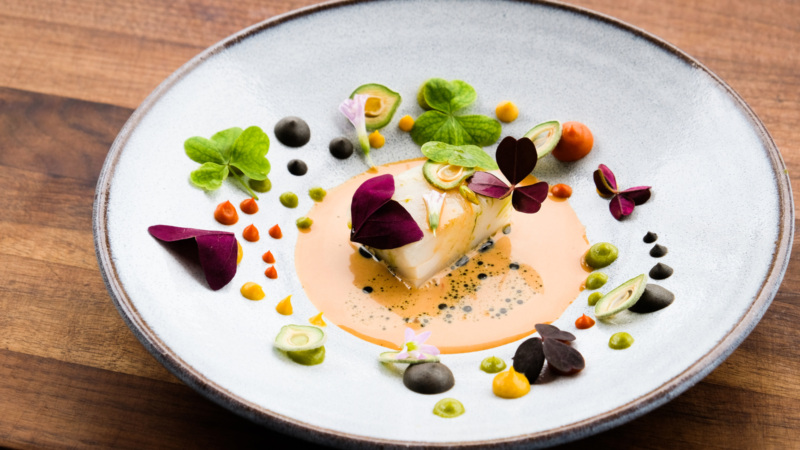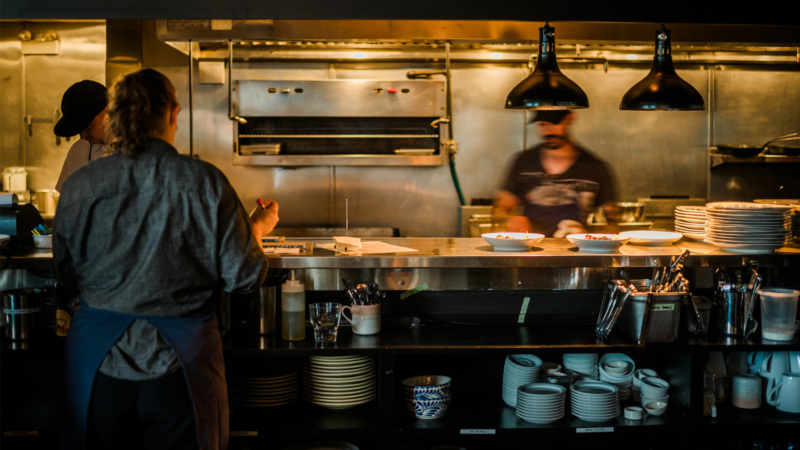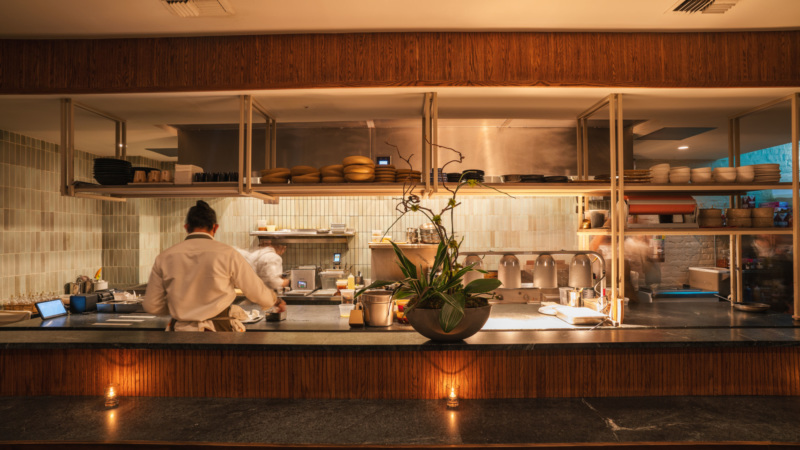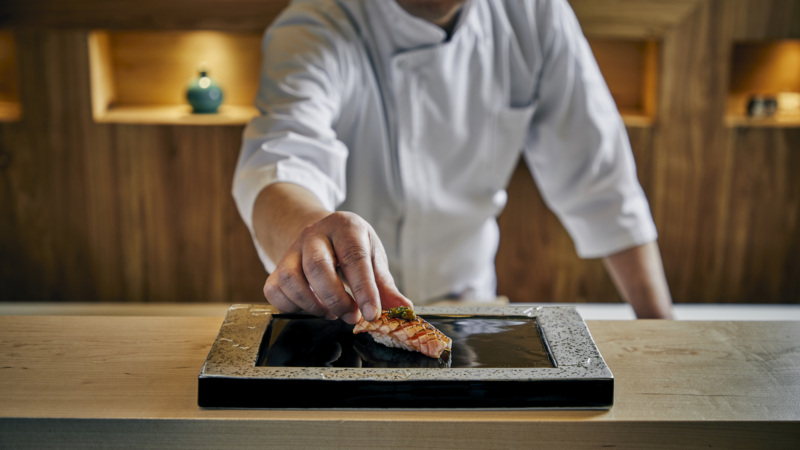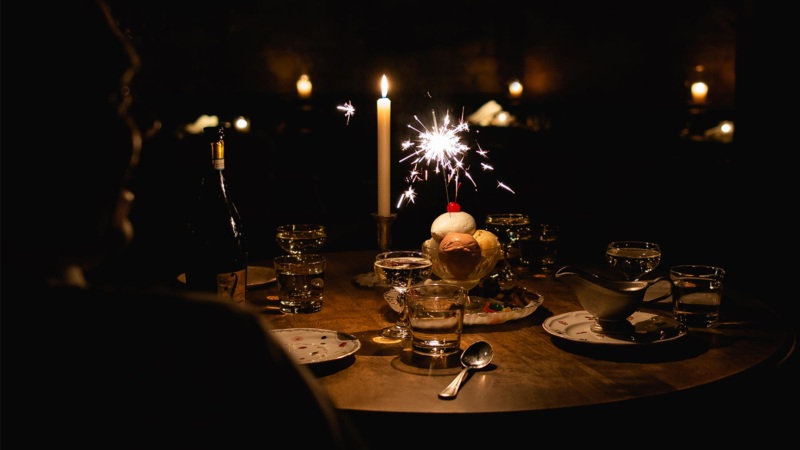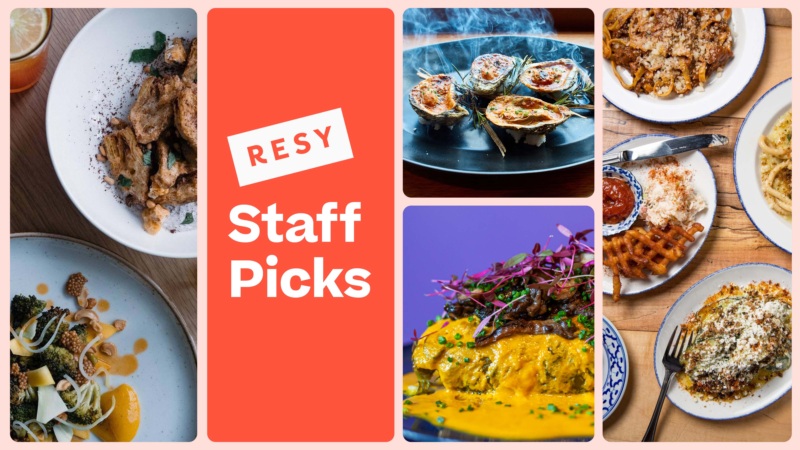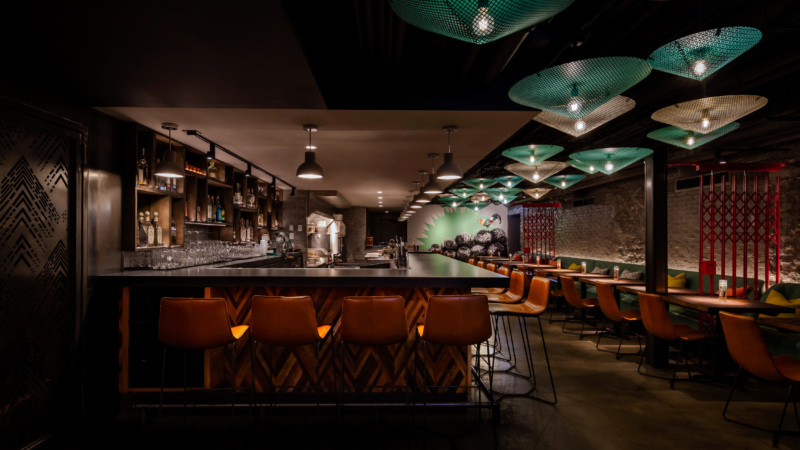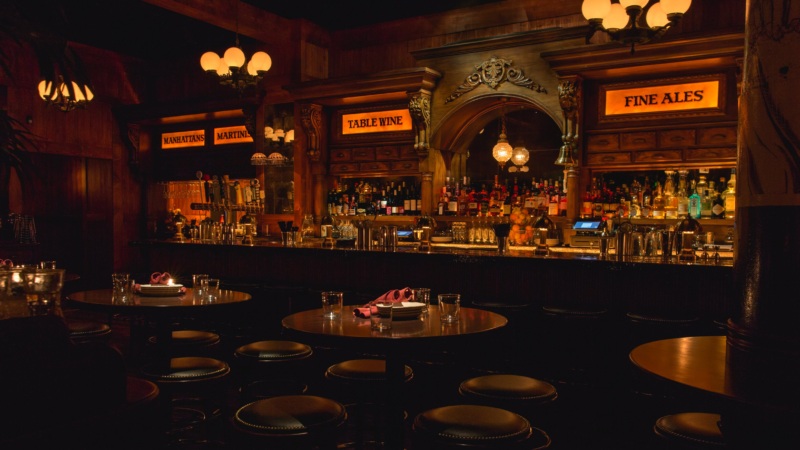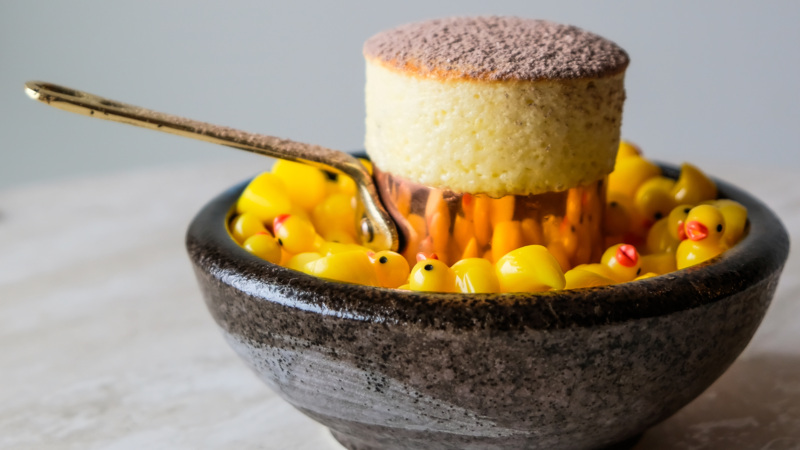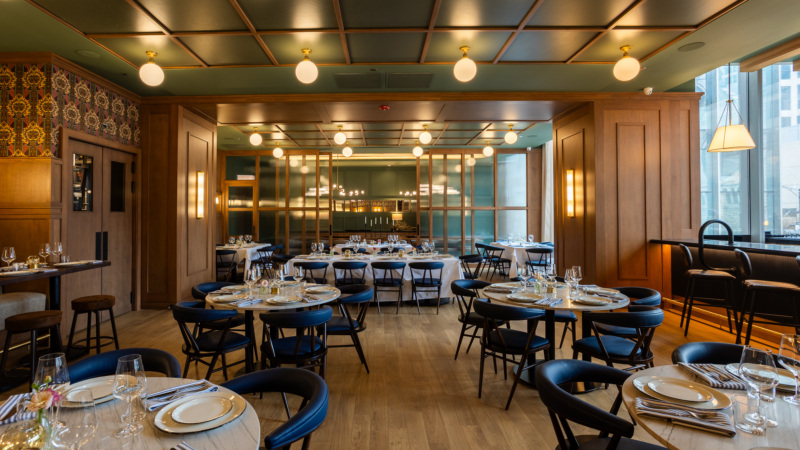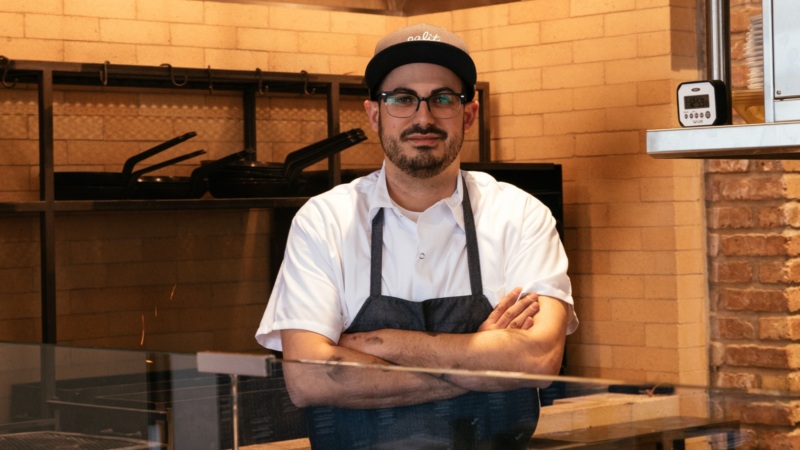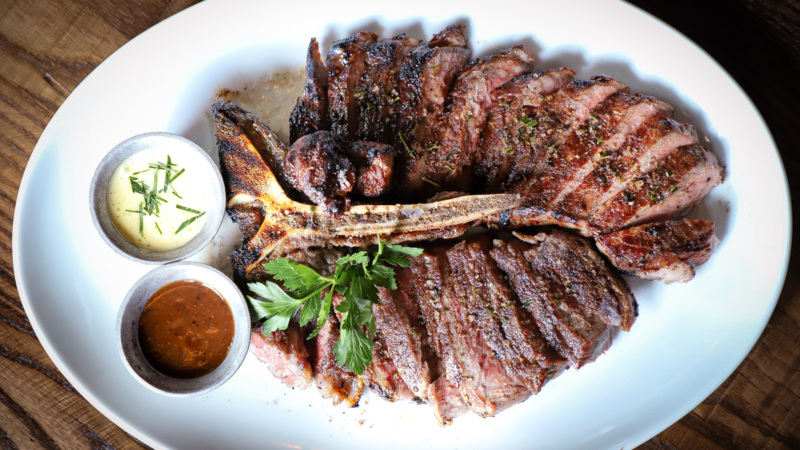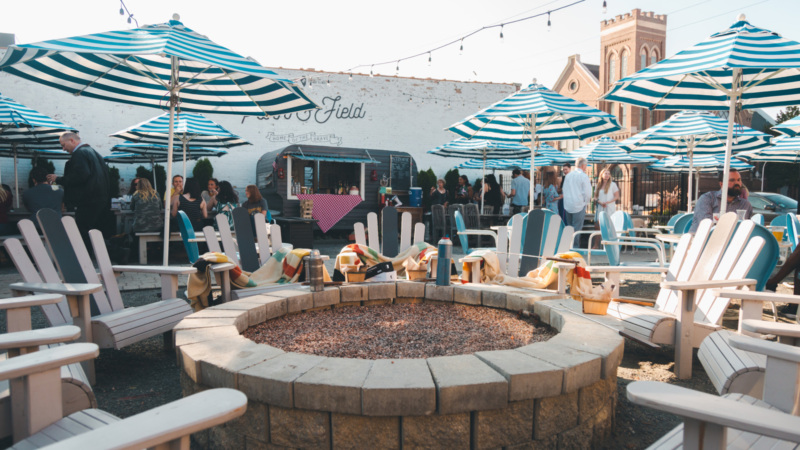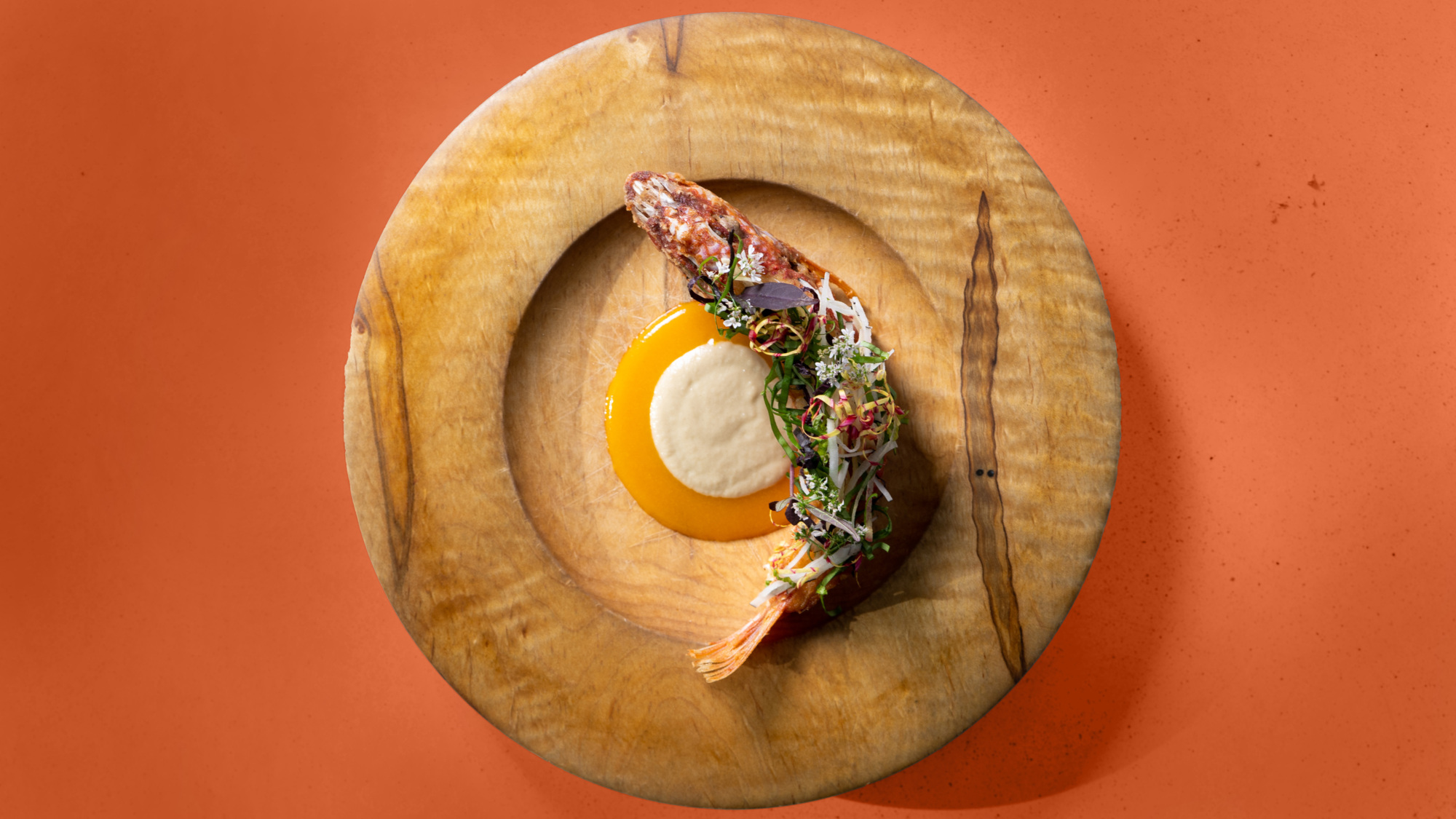
‘A Menu Based on Conversations’: Inside Esmé’s New, Latin American-Inspired Theme
When Esmé opened in Lincoln Park in August 2021, it was an instant success, earning a Michelin star within a year. The minimalist fine dining spot was chef Jenner Tomaska’s first foray into restaurant ownership, in partnership with his wife and creative director Katrina Bravo. The duo were clear from the beginning that Esmé was not just about serving beautiful food, but also serving as a platform for local artists and philanthropic collaborations.
For the sixth installment of their seasonally-rotating tasting menu, Tomaska looked to Latin America for inspiration. He didn’t have to go far: Bravo is Honduran and Cuban, and grew up speaking Spanish as her first language. They also turned to a network of Latin American friends and family for menu research, conducting a series of interviews with the people behind each course.
“History and politics can divide, but food should bring people together,” Tomaska says. Guests receive a link to a video playbill of the menu prior to dining, and QR codes at the table link to short clips to accompany each course. “We’ve never created a menu based on conversations before,” Bravo says.
Many of the recipes featured on this menu were passed down verbally, and only documented for the first time at Esmé. “Nobody likes to write things down and history has a way of being a game of telephone,” Tomaska says. “These recipes aren’t handed down as a piece of paper, but rather as a rite of passage.”
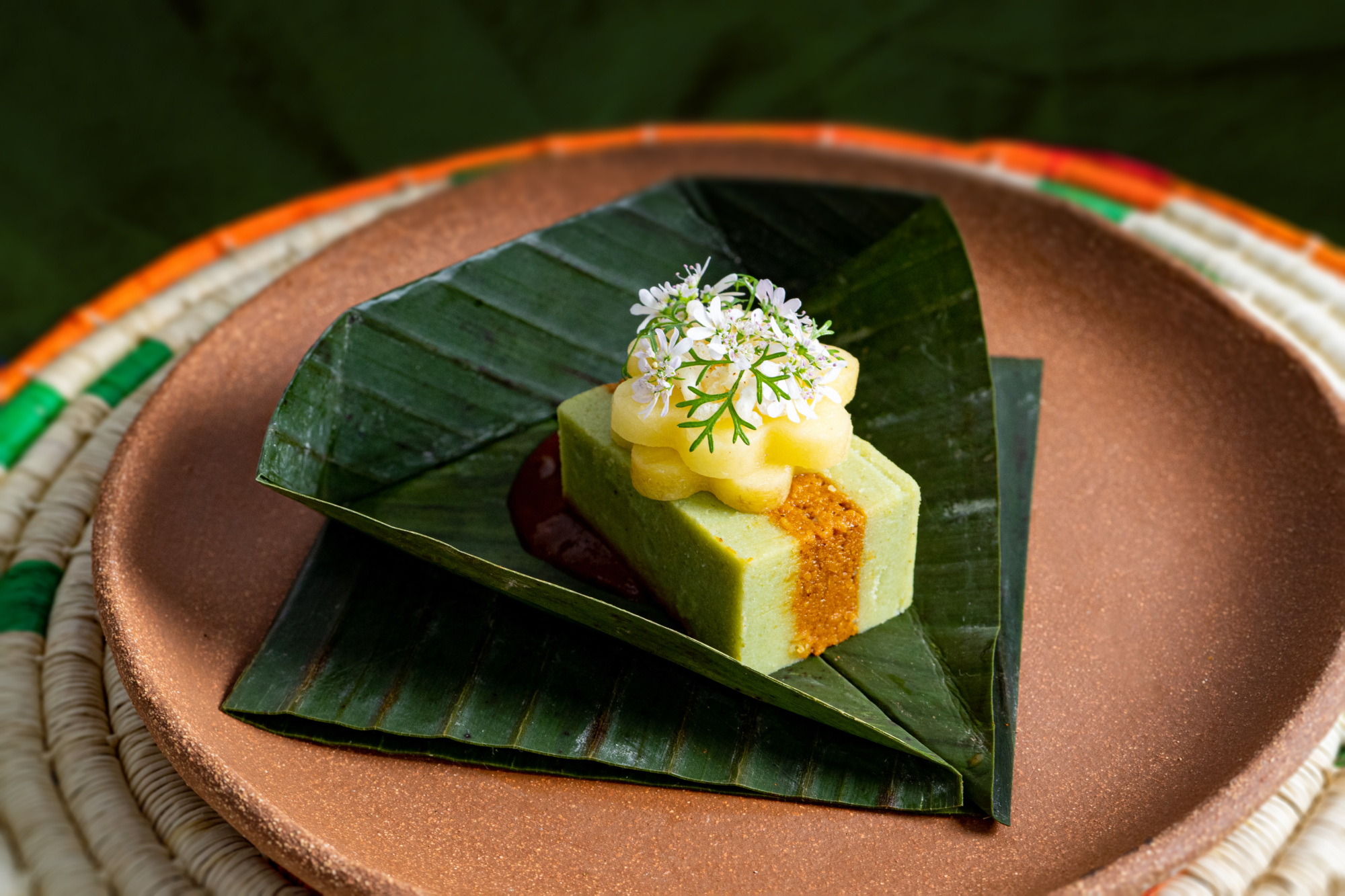
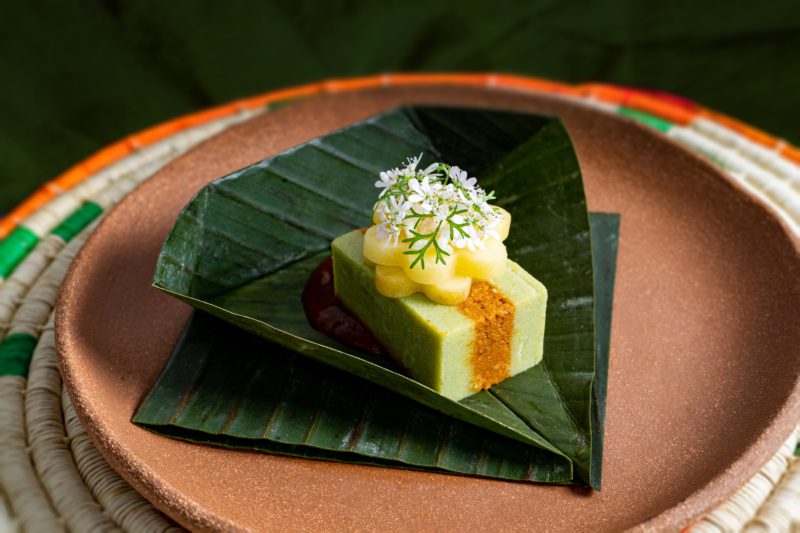
Lost Recipes
“Our sous chef Gustavo happens to be from the same town in Honduras as Katrina’s mom, and this course is Gustavo’s grandmother’s recipe, as a gift to Katrina’s mother, Marlita. Honduran tamales are different from Mexican tamales. They’re usually much larger and could be a full meal. We’re using two different masas – red and green – and the red masa is flavored with annatto while the green masa is flavored with tomatillo. These are very laborious, so they’re usually just made once a year for the holidays, and the red and green colors are a nod to Christmas.
“We wanted a vegetarian course, so we’re filling ours with potatoes and rice, although you often find tamales stuffed with chicken and pork. We steam it in a banana leaf, but rather than making you unwrap it, we fold the banana leaf into an origami shape and serve it over a salsa roja. We plate it on terracotta plates and pine needle baskets from Honduras.”
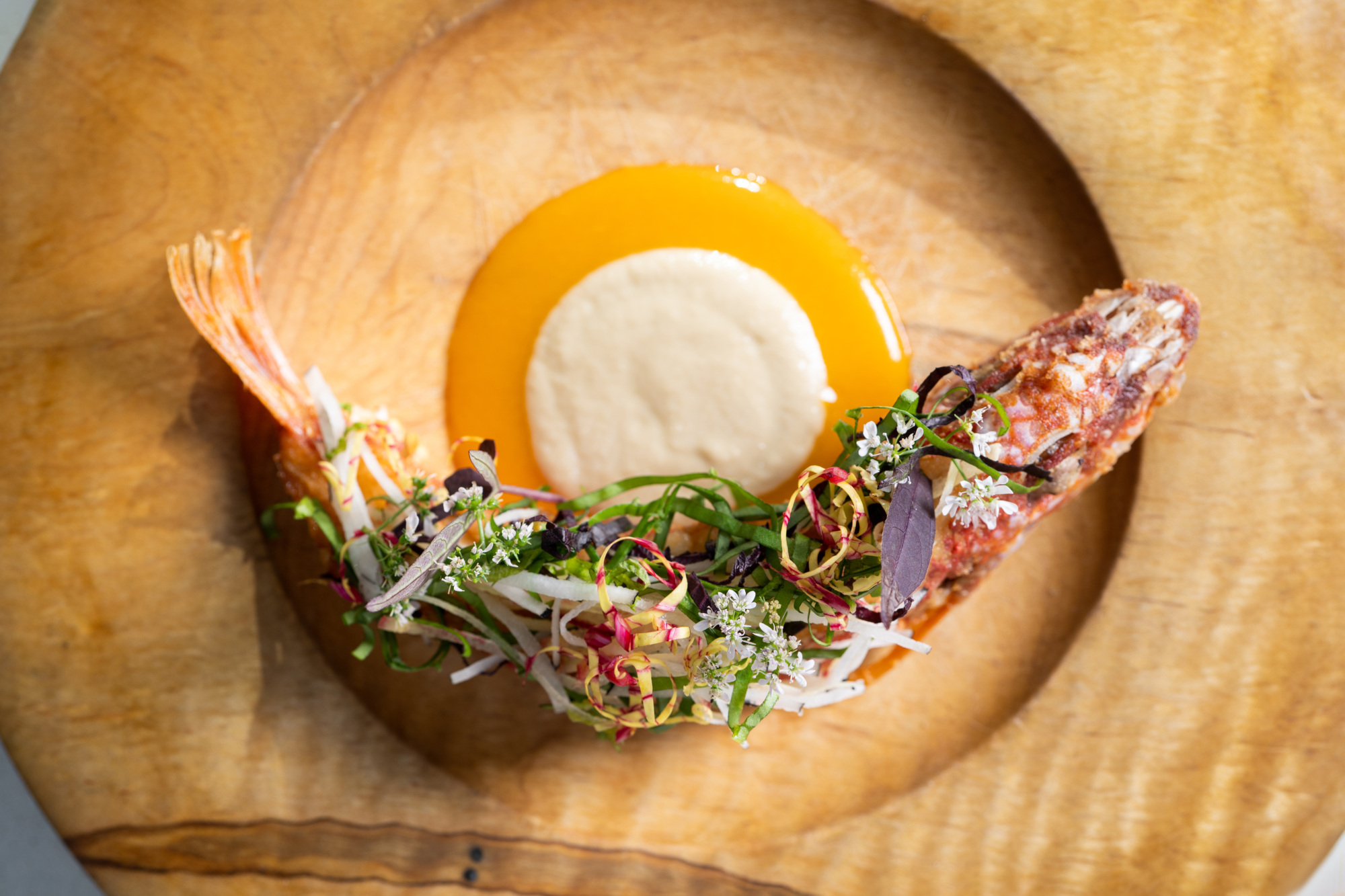
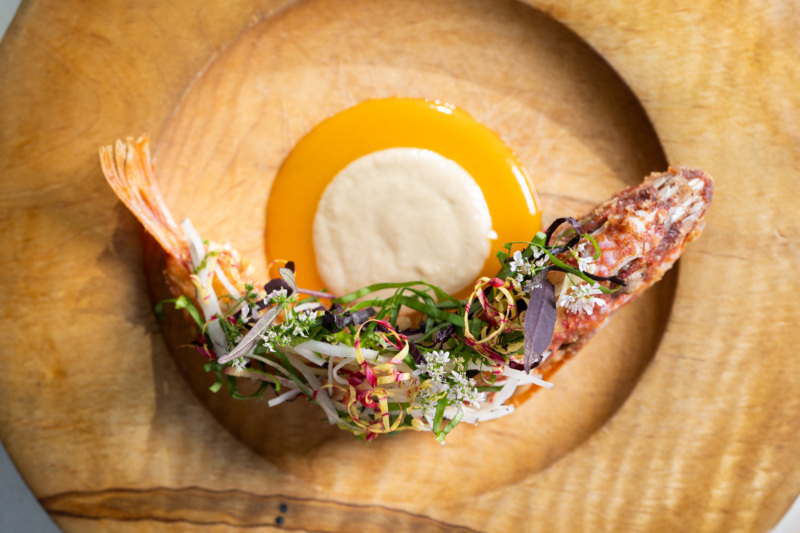
Burbujas de Amor
“Red mullet is my favorite fish. These beautiful little pink fish come from the Mediterranean, but Brazil has a very similar species that’s slightly larger, so that’s where we’re getting the fish from for this course. It eats like a nice piece of flaky white fish, just a little fishier, but because it’s so small it’s a pain to butcher. You have to remove the spine and there are pin bones.
“We stuff it with a scallop sausage, making a kind of XO sauce with flavors of chorizo, eggplant, aji amarillo, and apricot. It’s very acidic and bright, with lots of flavors from South America, Brazil, and Peru in particular. After we debone and stuff it, we deep fry it. Usually whole fried fish is done with a much bigger fish, like red snapper. Here, the filet is just 200 grams, so it’s one fish per person.
“As for the inspiration behind the name – ‘Burbujas de Amor’ is a very famous Latin American song by the Dominican singer Juan Luis Guerra. It’s a love song about a fish in a glass jar. The words are very catchy and cheeky and every Latin American knows it.”
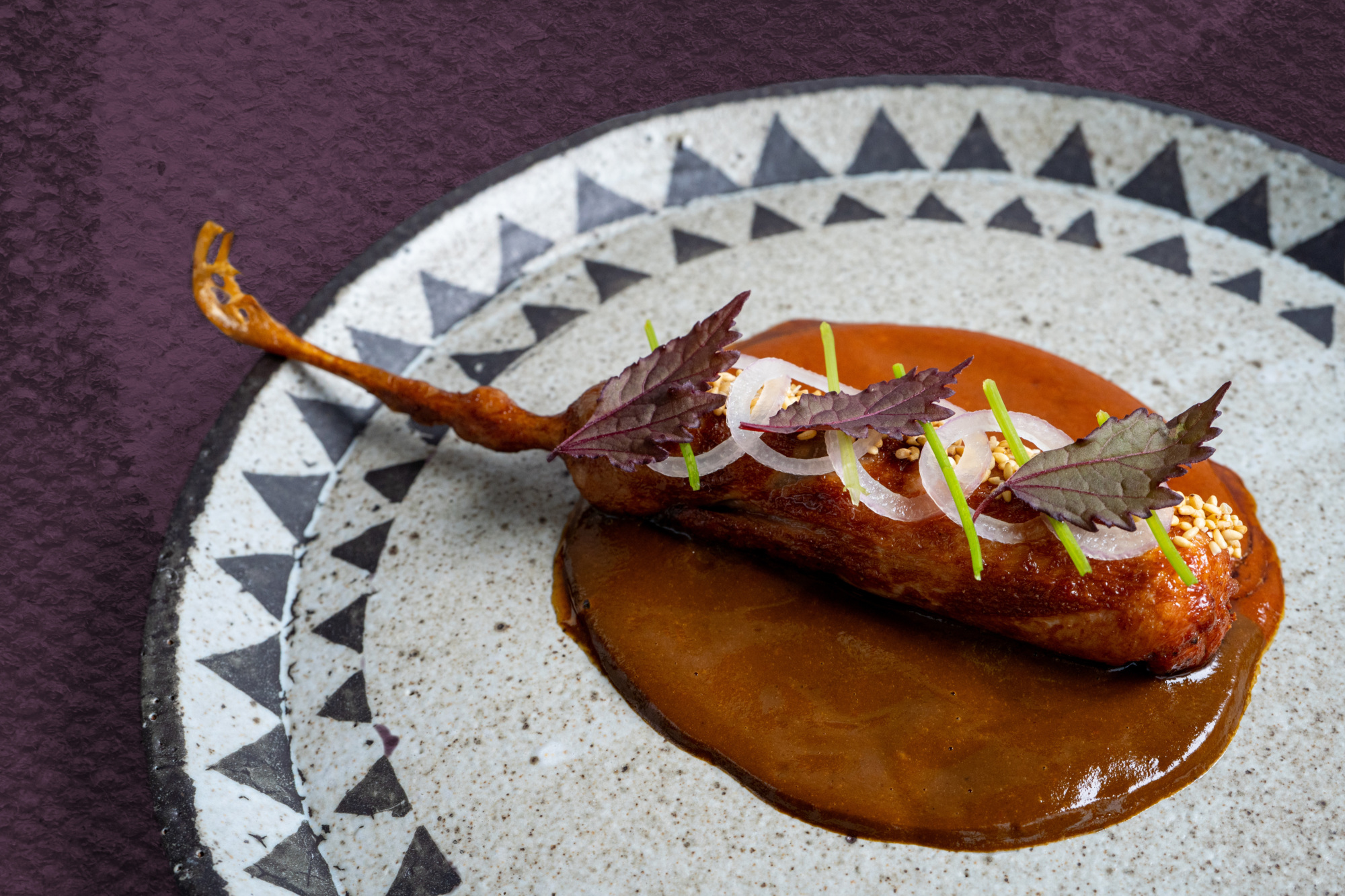

Madre y Hija
“Bueno Days is based in Italian Village and [owners] Alma and Cristóbal Mora make it a point to go to Mexico to meet farmers and find really quality coffee. We serve their coffee and they’ve done several pop-ups in our bar.
“For this course, Alma and her mom taught me to cook mole. This was Alma’s first time cooking with her mom so it was a pretty special moment. I feel like moles can go one of two ways – sweet and spicy or more earthy. The Moras mole is very much sweet and spicy and it’s delicious. It starts with chiles, nuts, seeds, Maria cookies, chocolate, almond, sesame, and cinnamon. That’s her mom’s mole, but Alma makes a souped up version that’s more fortified and a little sweeter, adding prunes, tomatoes, and pepitas.
“I thought I was only learning one recipe but I got two, so it made sense to serve both. We serve Alma’s mole and her mom’s version side by side with quail. And we stuff the quail with ground pork and chicken sausage that’s spiced with Bueno Days coffee.”


Pork in Clay
“Katrina’s grandfather and uncle have a tradition of cooking lechon on Sundays. It’s a family thing for most Cubans. Lechon cooked in la caja china is a Cuban staple and something you learn to cook with your dad.
“With Katrina’s family, I got to juice the lime and dice the garlic and be the assistant, which was a nice change. The mojo is the most important part, along with the cooking technique, and we really wanted to honor that. I think [our mojo] is served very close to how they would serve it. It’s made with sour oranges, lemons, limes, lots of garlic, and oregano. Katrina’s dad would say enough garlic to kill a horse. It’s very simple and traditional.
“Rather than butt or shoulder from the pork, we have these beautiful Ibérico collars, so the cut is slightly different and it eats a lot nicer in my opinion. The fat is more evenly distributed so we can serve it in a portion size that’s appropriate for a 15-course menu.”

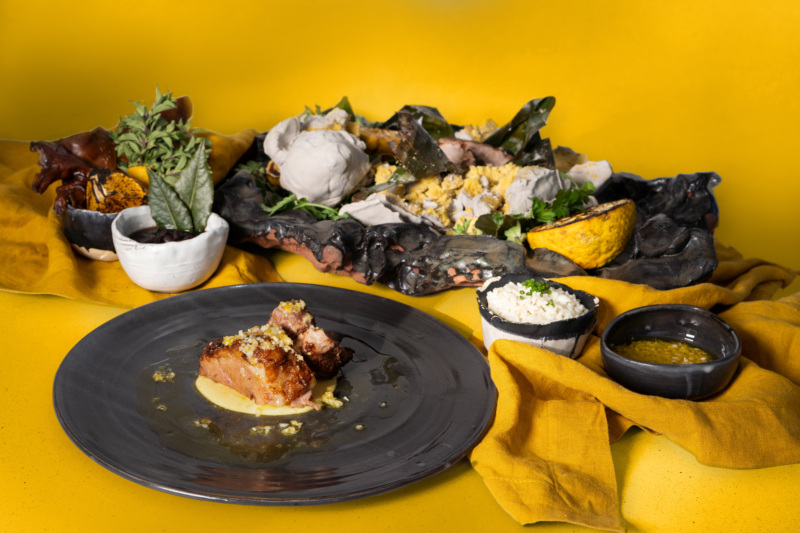
“We season it with salt, pepper, and spices, and cure it for 24 hours, similar to how [Katrina’s dad] would. Then we inject mojo into it and smother mojo all over it. Historically you’d cook lechon in the ground, but in modern times you use la caja china, this metal cooking box that you cover with coals as an outdoor oven. You’re cooking low and slow at first to make it tender, and at the end you turn up the heat and get all these crispy bits, with garlic and the sugars from the marinade caramelizing.
“It’s always served with white rice and black beans — we’re using a steamed long grain Cahokia rice from Southern Illinois and black charro beans from Northern Michigan.
“To represent the caja china, we are cooking the lechon in a sculpted clay pig that captures all of the aromas just as if you’d dug a hole in the ground. We make all of these clay pigs by hand. It’s a giant pain in the ass. We’re sculpting them for the next day after service at 1 a.m.
“I don’t like a lot of the smoke and mirrors as much as I did when I was younger. Anything we’ll do at the table needs to have some sort of purpose. We cook the pig from raw in the clay so we want to showcase that. It’s not like we sous vide it and then put it in clay to crack it open as a showpiece.”
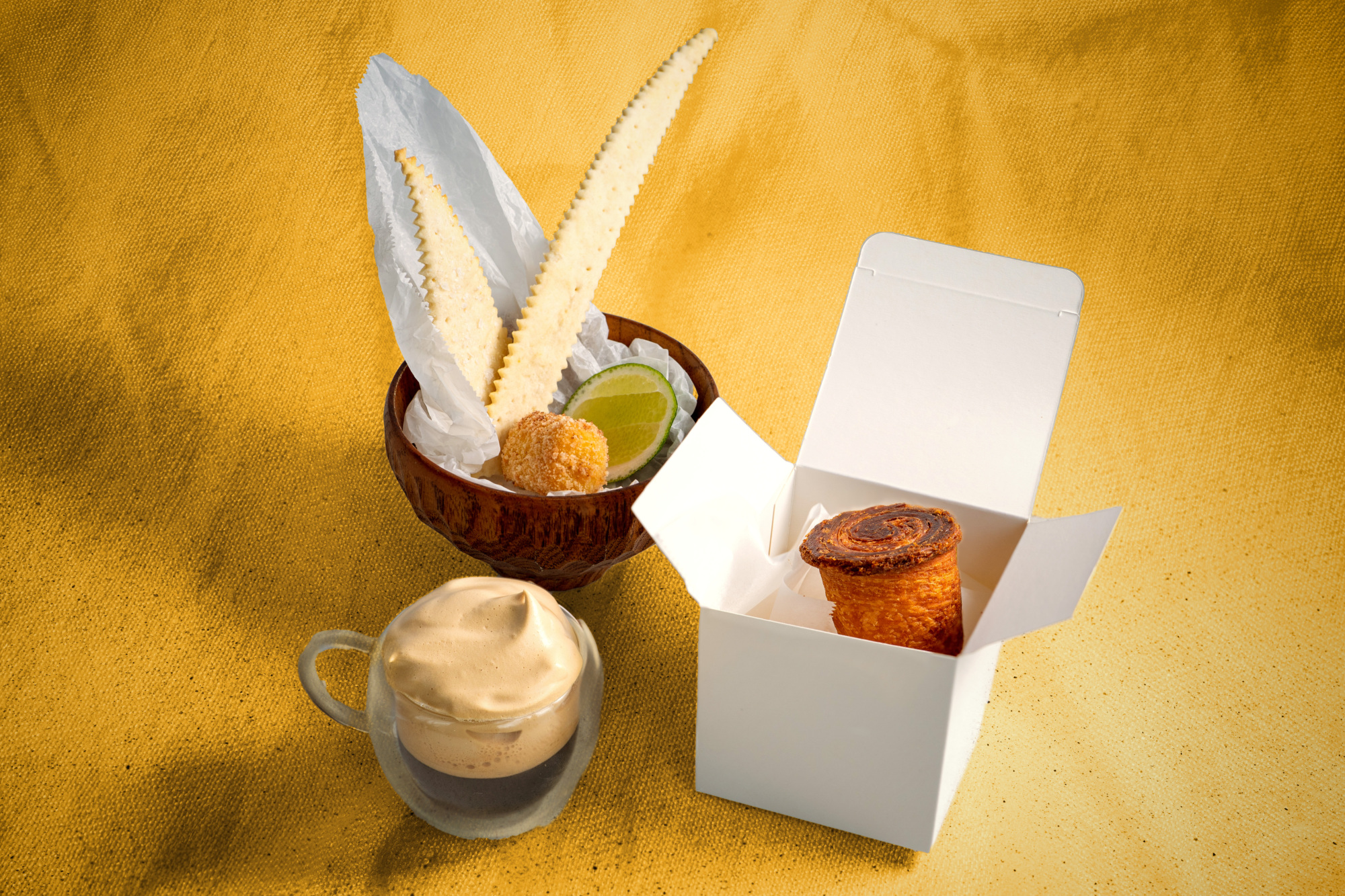
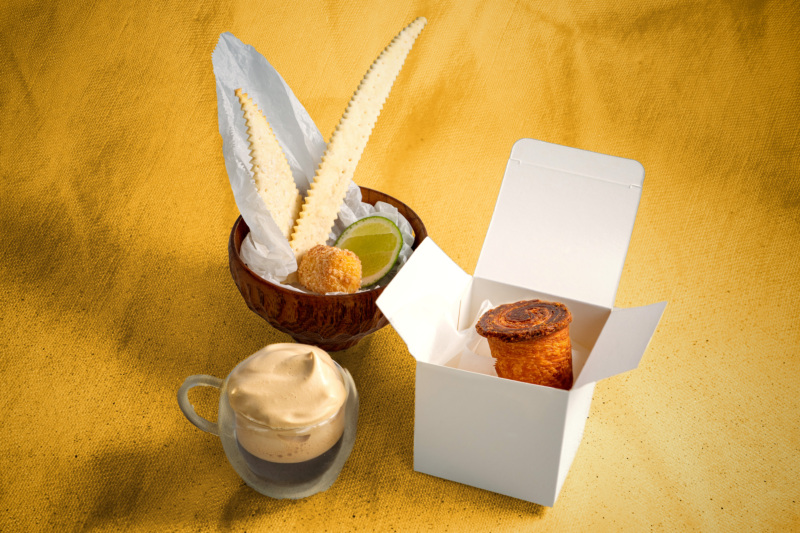
Cuban Breakfast
“This course honors Katrina’s hometown of Miami with a traditional Cuban breakfast of café con leche and pastelitos. Guava pastelitos are an iconic Miami Cuban pastry. We’ll do a version of that with butter laminated milk bread, but rather than going the traditional route of guava and cream cheese, we’re making a farmer’s cheese and a parsnip paste. I hate desserts that are overburdened by sweet, so we wanted more vegetal notes rather than just a sugar bomb. Plus, we wanted to do something in season and local.
“The second bite is a croquette. Lots of times you find beans in dessert in Latin America and croquetas are another thing you’ll have for breakfast. A deep fried croquette filled with beans smashed between Saltine crackers, served with half a lime wedge. We cook white navy beans in Ibérico stock for a very savory bean croquette, smashed between housemade Saltines with finger lime sprinkled on top.
“We’re going to serve café con leche in an eggshell with a couple different layers, including a coffee custard with Bueno Days coffee.”
Amber Gibson is a Chicago-based journalist specializing in travel, food, and wine. Her work has appeared in Departures, Food & Wine, Saveur, Bon Appétit, and Travel + Leisure. Follow her here; follow Resy too.










